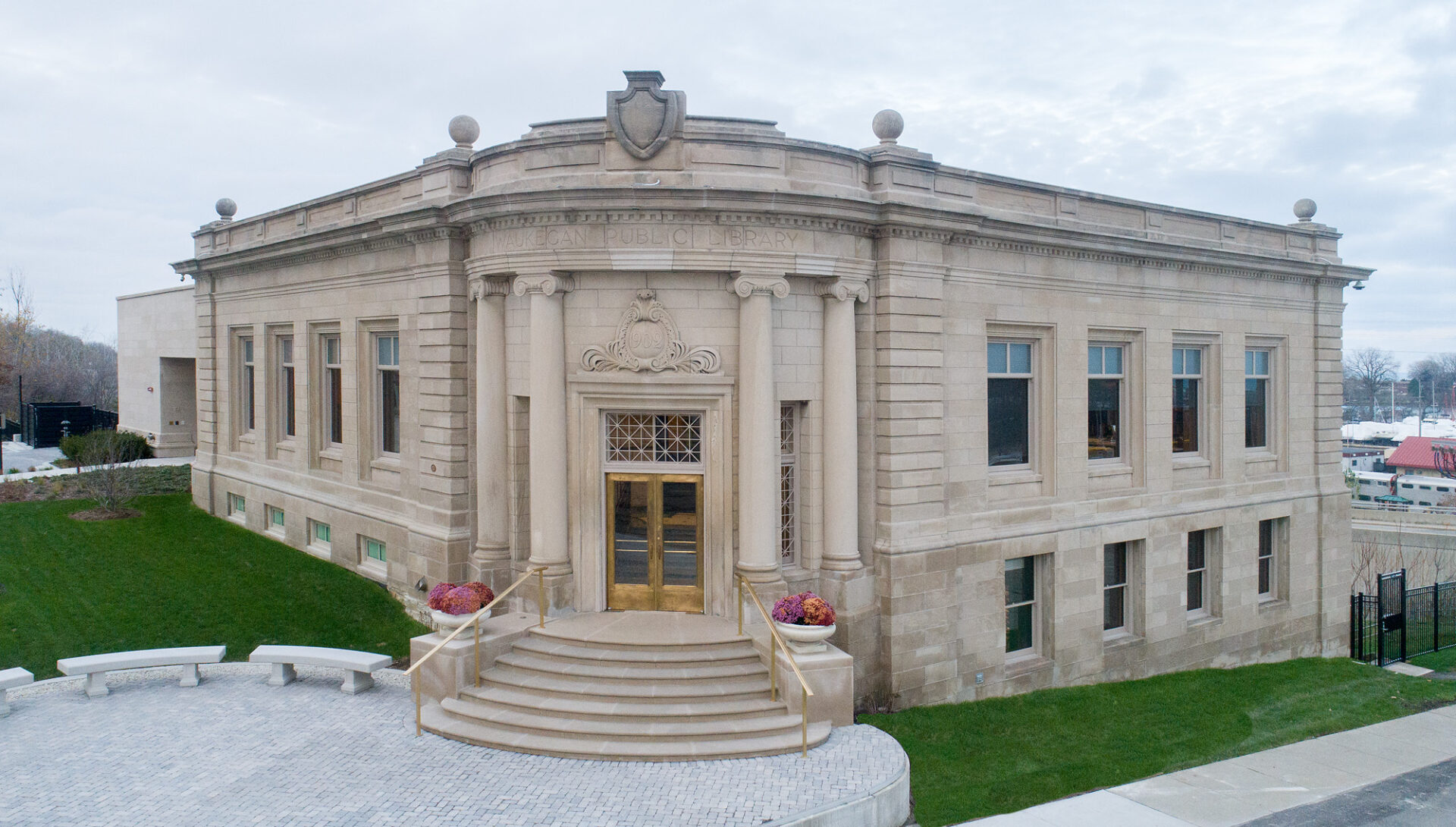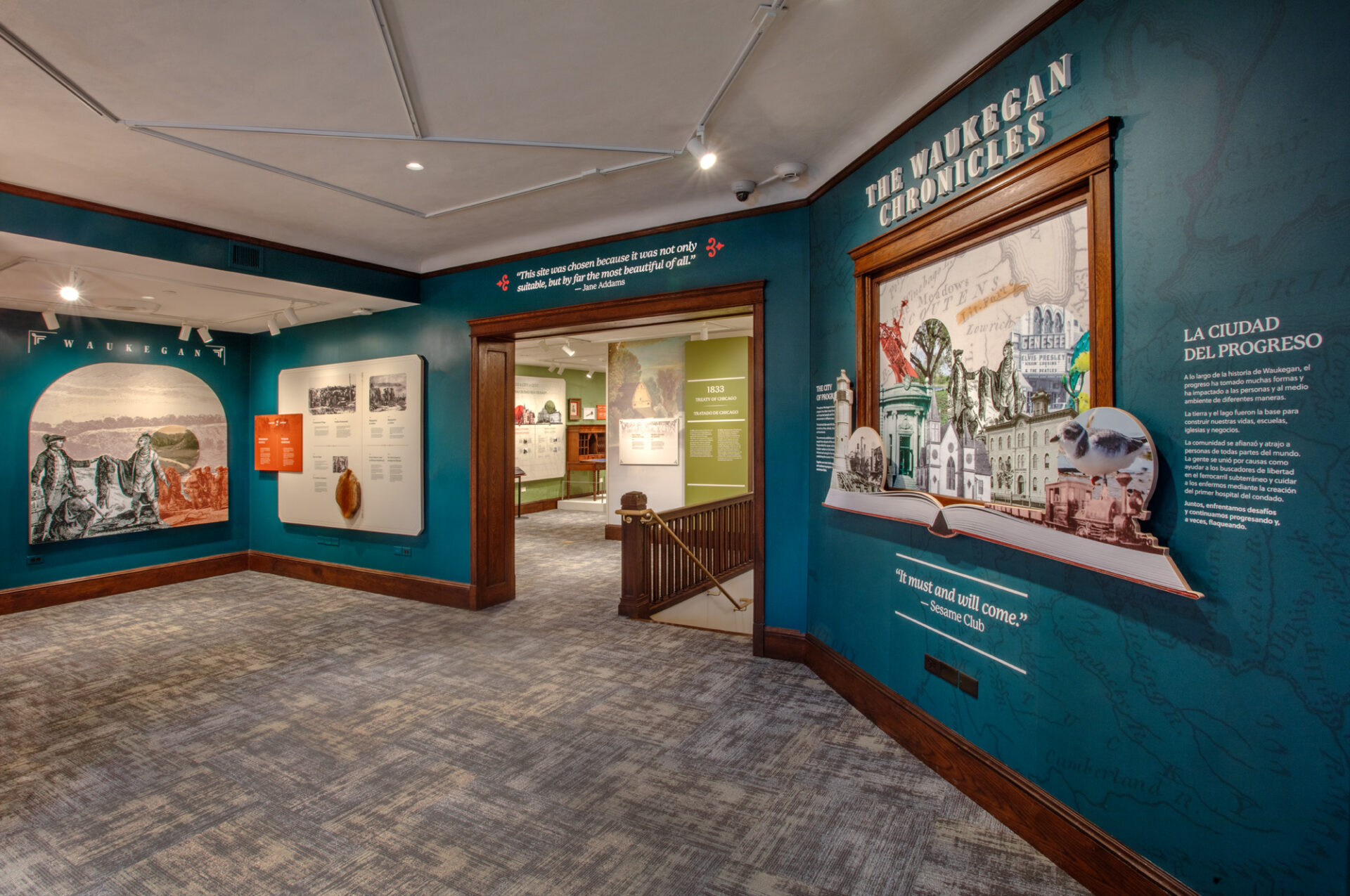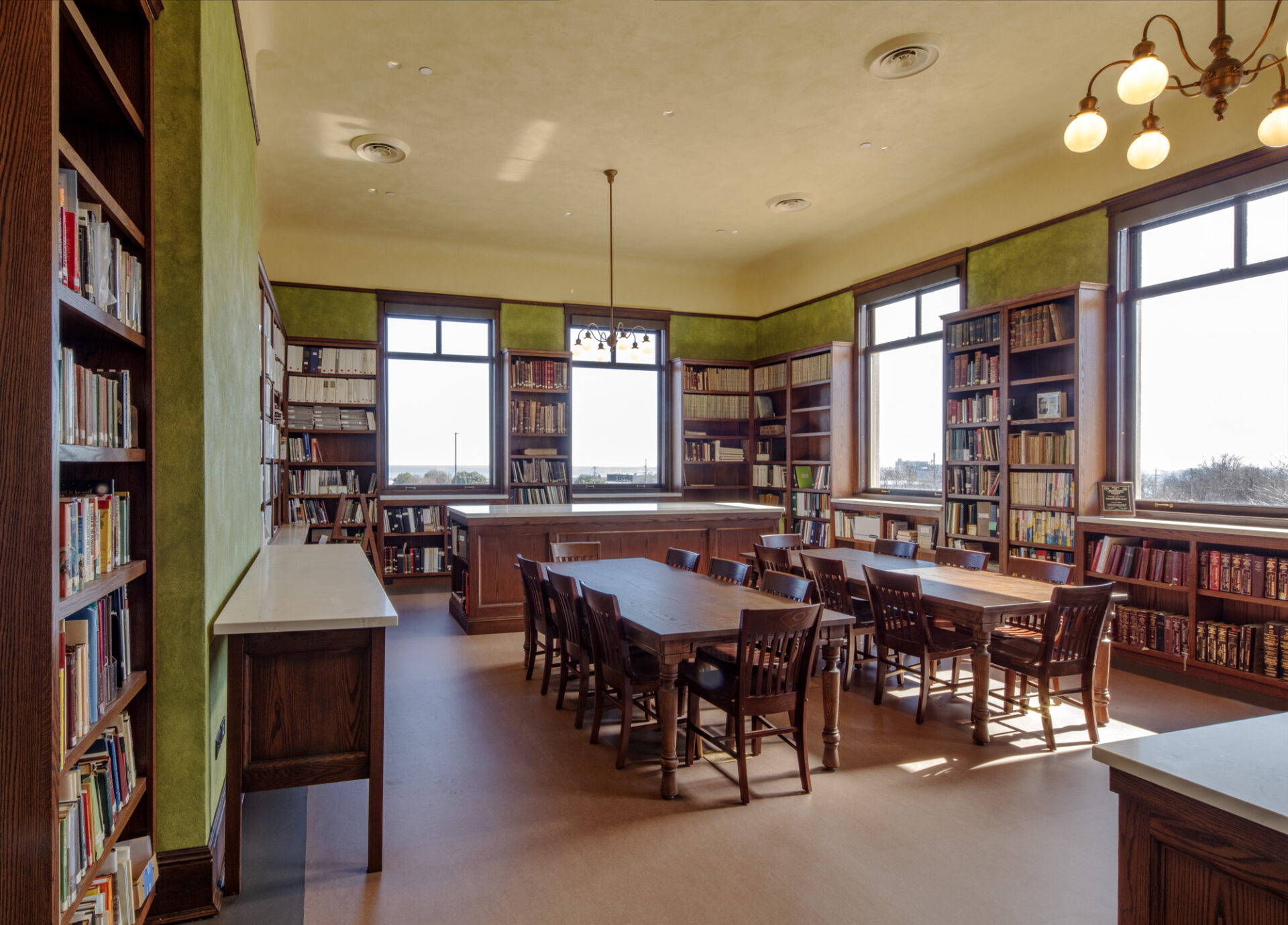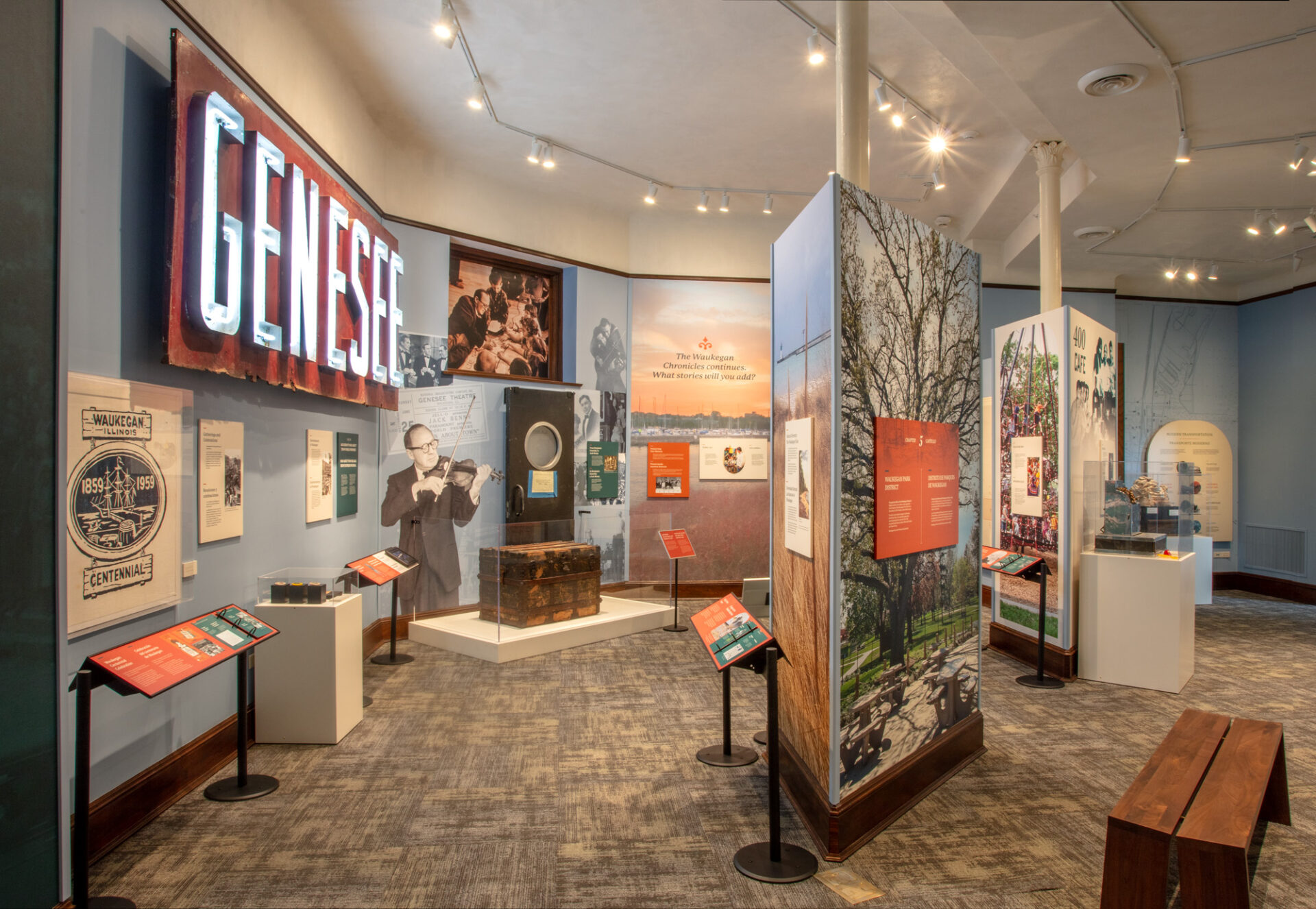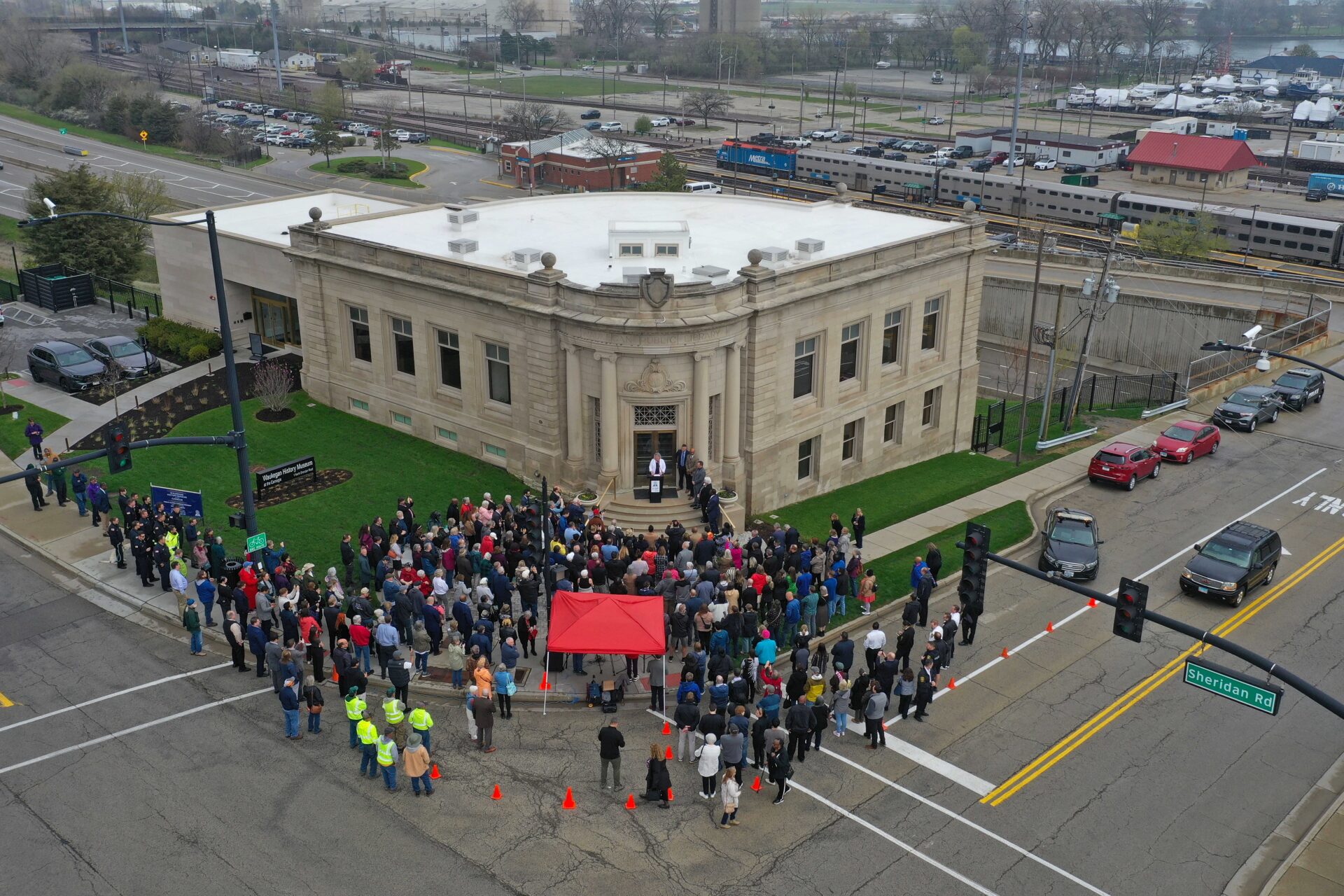2025 Landmarks Illinois Richard H. Driehaus Foundation Preservation Award for Rehabilitation
The long-vacant, historic Carnegie Library in downtown Waukegan has been painstakingly restored to create a vibrant museum showcasing the architecturally significant building’s unique features as well as the history of the northern Chicago suburb. The building, which is landmarked locally and listed in the National Register of Historic Places, was designed by the architecture firm behind many Carnegie libraries, Patton and Miller. It served as the town’s main library from 1903 until 1965, when it closed. Following a brief period of use by various community groups, the landmark overlooking Lake Michigan sat largely vacant until this year when the Waukegan Historical Society reopened it as its new home, the Waukegan History Museum at the Carnegie. The historical society and its longtime partner, the Waukegan Park District, led the $15 million project to revitalize the building that had experienced severe deterioration after decades of vacancy and vandalism. With the help of skilled tradesmen and preservation professionals, historic details and character were brought back to life. Most historic features required both the restoration of surviving fabric and the replication of missing elements, posing a significant challenge to create a uniform appearance. For instance, restoration of the plaster pier capitals, cornice, niches and dome in the central reception room resulted in a seamless combination of new and restored details. Original paint and stain colors and surface textures of original sand-float plaster were also replicated based on a rigorous historic finish analysis. The result is approximately 9,600 square feet of restored space across the original building and an accessible addition that houses exhibition spaces, a research library and archive and an assembly space for lectures and special programs.
(Photo credit: Leslie Schwartz)

